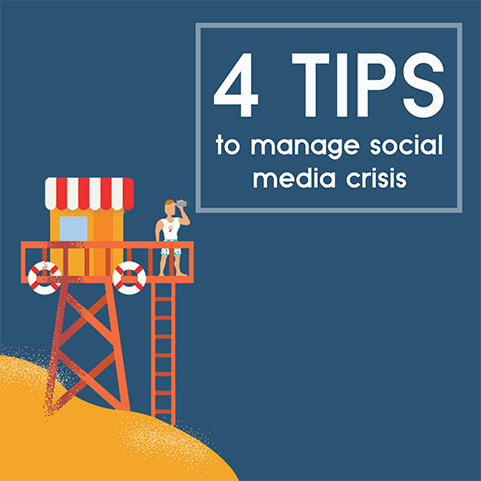
4 Tips to Manage a Social Media Crisis
Social Media Crisis is easily one of the worst nightmare for a brand manager.
In the age of social media, even the slightest crisis can quickly gain momentum and get out of hands. If you are already prepared, it’s much easier to manage your company’s reputation and get through a crisis unharmed. If there’s an immense volume of incoming social media messages on one particular topic, chances are being you are going to face a social media crisis soon.
A social media crisis may result from two things. First, external factors like a natural disaster, human tragedy or something related to your industry can cause people to reach out to your social media accounts. Second, a social media crisis can be initiated on the platform itself due to an insensitive tweet or inappropriate post (picture). Waiting for a social media crisis to blow over is never an option. If you ignore it, it will likely get worse.
In this article, we will share four tips on how to effectively deal with a social media crisis.
Always have a plan in place
A social media crisis absorbs both time and money. When you are in the crisis mode, you feel like you are in over your head. Chalk out what you would need to respond to a social media crisis way ahead of the time. Come up with a quality of scenarios, so you can take control of any situation when the time arises.
Create a separate Crisis Hub point (Website)
Develop a single crisis center to direct customers and stakeholders to one source that has relevant useful links with up-to-date information.
In 2014, General Motors tackled a major tragedy that caused a huge number of customers to reach out to their social media accounts. People died in car crashes resulting from faulty ignition switches, which prevented airbags from inflating. General Motors created a special, stand-alone website that served as a hub of information. It contained FAQs about the recall, a step-by-step explanation of the problems and advice on where and how to get help.
Hence a Crisis Center always helps a business provide more context about any situation to the people involved. It will also relieve the load on your social media channels.
Monitor the Crisis
To efficiently control a social media crisis, whether it’s caused by external or internal factors, you need to monitor how it develops. Also, you need to do this in such a way that the volume of social media messages doesn’t demoralize you.
Use a social media monitoring tool or simply keep Twitter tabs open that have your notifications, as well as a search on the relevant hashtag. Also, mark the conversations that are coming in via email to keep track of all social media messages that still need to reply.
Acknowledge Your Mistakes
First and foremost, whenever a social media crisis takes place internally, you should take full responsibility for the issue, even if you’re not the one to blame. Design out a well-advised public statement and share it first on the original platform where the problem originated. For example, if a crisis was first initiated on Twitter, Tweet that statement there at first. The speed of a reply is everything.
To make the statement more compelling, have a trustworthy source within your company, such as the head of social media, brand manager, etc., speak on behalf of your brand. When issuing a statement, show compassion and your full commitment to the issue. Make sure you assure customers that they’re your utmost priority. Don’t be defensive, don’t justify your actions and most importantly, don’t hide from criticism.
A social media crisis can easily spread like a fire & damage your brand’s reputation within minutes or even seconds. If you want to reclaim the trust of your customers, you’ll need to step up your game. Communicate proactively, take matters into your own hands and never be vulnerable to a social media crisis.
What do you think? Have you ever had to deal with a crisis on social media? What tools did you use to monitor it? How did you handle it? Share your thoughts and experiences in the comments section of this blog.
PS – Curious about the Do’s & Don’ts for Social Media Marketing? Check out our blog here!



